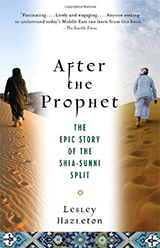 I slow down for falcons.
I slow down for falcons.
Falcons, eagles, hawks, cranes, herons, kestrels, all manner of large birds.
If I’m on the road, I pull over, stop the car, get out, and allow myself to be entranced. If I’m at home and spot one from my office window, I abandon the keyboard, step out onto the deck, and stand transfixed, silently urging it closer even as it spirals farther away.
This is one reason I’ve been stretching the muscles of my mind trying to commit Gerard Manley Hopkins’ poem The Windhover to memory — the first eight lines, that is, since the last six go all over-the-top Christ-our-Lordy and do nothing for me.
A mere eight lines should be easy enough, no? It should be what my Irish mother used to call a doddle. And yet while I think I have an excellent memory, this poem defies me, and has done so for well over a year.
Try reciting it out loud, slowly, rather than reading it fast and silently:
I caught this morning morning’s minion, king-dom of daylight’s dauphin, dapple-dawn-drawn Falcon, in his ridingOf the rolling level underneath him steady air, and stridingHigh there, how he rung upon the rein of a wimpling wingIn his ecstasy! then off, off forth on swing,As a skate’s heel sweeps smooth on a bow-bend: the hurl and glidingRebuffed the big wind. My heart in hidingStirred for a bird, – the achieve of, the mastery of the thing!
You see what I mean? Wouldn’t you love to ring upon the rein of a wimpling wing?
This is one of the two most anthologized poems written by Hopkins, the closeted gay man who became a Jesuit priest and indeed kept his heart in hiding — except in his poetry. The other is Pied Beauty, which you might know from its first line, “Glory be to God for dappled things,” but that I love for its seventh, which expands dappledness to “All things counter, original, spare, strange.”
The idea of beauty as counter, original, spare, strange is so damn beautiful, and yet it’s ‘The Windhover’ that haunts me, so much so that it comes with me everywhere I drive. Physically comes with me, that is, nestled on page 468 of The Rattlebag, an anthology edited by Ted Hiughes and Seamus Heaney that has taken up permanent residence on the passenger seat of my car, jostling for room with the occasional human passenger. Every time a drawbridge goes up (this being watery Seattle), I open the book to the dog-eared page and recite the lines a few times, eyes open sometimes, closed at others. Yet no matter how I do it, nor how many times I do it, I find myself stumbling, and have to stop and look at the printed page, always discovering yet another transcendent phrase that’s escaped me.
‘The Windhover’ defies memory, at least for me, and this makes me marvel not only at the lines themselves — at each evocatively, even provocatively precise word — but at how Hopkins wrote them. He has to have held the whole of the poem in his mind in order to write it, has to have each word following each word firmly in place. And yet as a mere reader/reciter, I can’t keep track. The poem seems to spiral away from me, to soar out of sight, leaving me thrillingly aware of the achieve of, the mastery of the thing!






I’m quite sure I did memorize it in high school! Now all go for 2 and read the rest, flying with the falcon
Thanks for reminding me
Wish I’d had your high-school teacher!
you would have loved Mr. Wilbury Crockett z”l. He would have called you Miss Hazleton and been very interested in your response to what you read.
Wilbury! What a wonderfully Hopkinsy name!
Lesley, these words remind me why I like to be with you as well as read your written words. Wonderful heart-felt piece. Delicious flight.
Warmly, Tamam